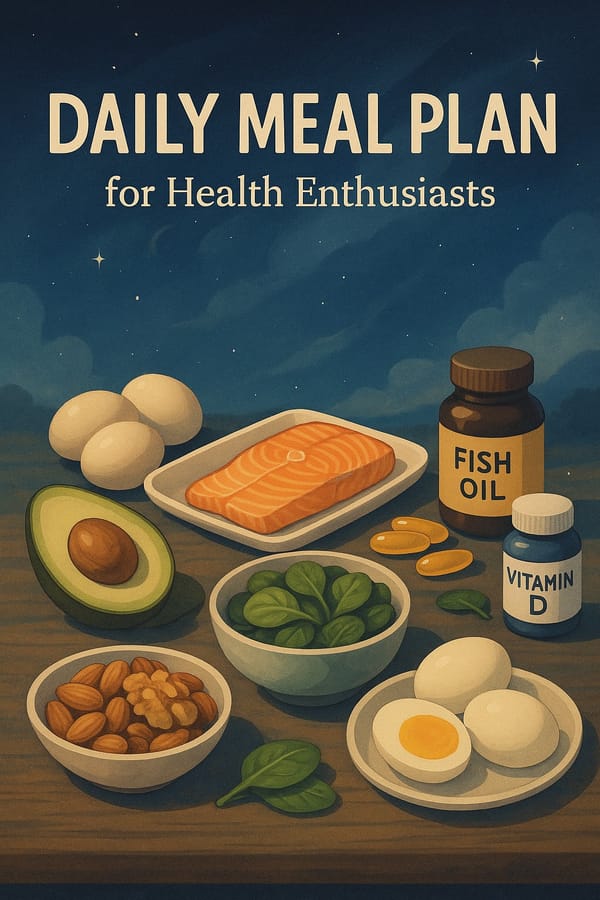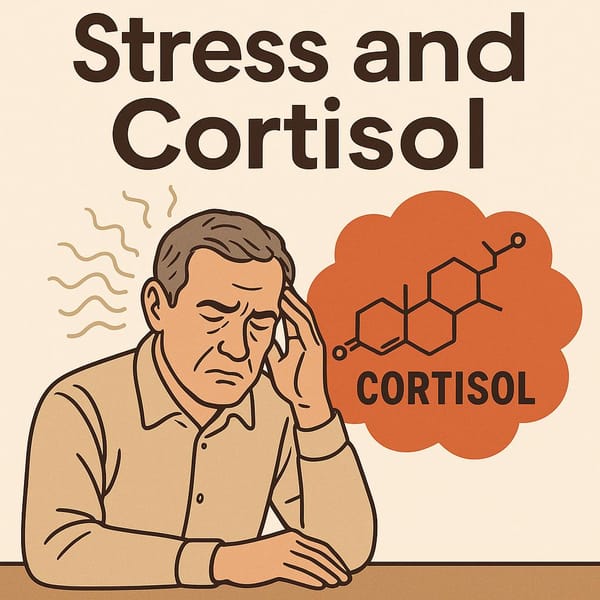Less Salt, More Health: Adjusting Salt Consumption for Ages 50+ for a Strong Heart and Kidneys

As we enter our 50s and beyond, our bodies and various systems naturally undergo changes. Consuming excessive salt or sodium can be a risk factor for multiple health problems, including high blood pressure, kidney disease, and cardiovascular issues. Many individuals still consume more salt than the World Health Organization (WHO) recommends—no more than 5 grams per day, equivalent to about 2,000 milligrams of sodium. In this article, we will explore the impact of salt consumption on individuals aged 50 and above and provide practical guidelines for reducing sodium intake to maintain good health and lower disease risk.
The Importance of Reducing Salt for Ages 50+
- Declining Kidney Function with Age: The kidneys naturally weaken over time, reducing their ability to excrete excess sodium. A high-sodium diet increases stress on the kidneys and raises the risk of chronic kidney disease.
- Increased Risk of High Blood Pressure: Blood pressure tends to rise with age. Excess sodium retains water in the body, increasing blood volume and leading to higher blood pressure, which, if unmanaged, can damage the blood vessels and heart.
- Prevention of Heart Disease and Stroke: Cutting back on salt is crucial for cardiovascular health, as high blood pressure is a leading factor in heart attacks and strokes.
- Maintaining Fluid Balance in the Body: High sodium intake leads to water retention, causing swelling in the ankles and increasing the risk of heart failure in individuals with existing heart conditions.
Recommended Sodium Intake for Ages 50+
- WHO Guidelines: No more than 5 grams of salt per day (about 2,000 milligrams of sodium).
- For Those with Health Conditions: Individuals with high blood pressure, kidney disease, or specific medical conditions should further limit their sodium intake to between 1,500–2,000 milligrams per day.
- Check Nutrition Labels: Understanding the sodium content of packaged foods is essential, especially for older adults who need to monitor their intake carefully.
Dangers of Excessive Salt Consumption
- High Blood Pressure (Hypertension)
- Sodium increases blood volume by retaining water, leading to elevated blood pressure.
- Prolonged hypertension significantly raises the risk of heart disease, stroke, and kidney damage.
- Research from the American Heart Association confirms that reducing salt intake lowers cardiovascular risks.
- Kidney Disease
- Excess sodium overworks the kidneys, accelerating their decline.
- Older adults have a reduced ability to filter and excrete sodium, making them more vulnerable to chronic kidney disease.
- Early-stage kidney disease often has no symptoms, so preventive dietary measures are crucial.
- Cardiovascular Disease
- Excess salt increases the workload on the heart, leading to thickened artery walls and higher blood pressure.
- Over time, high sodium intake contributes to atherosclerosis (hardening of the arteries), increasing the risk of heart attacks and strokes.
- Fluid Retention and Swelling (Edema)
- Sodium-induced water retention causes swelling, especially in the legs, ankles, and hands.
- Edema can lead to discomfort, mobility issues, and a higher fall risk for older adults.
- Bone and Joint Health
- High sodium intake can contribute to calcium loss, leading to weaker bones.
- Studies indicate a link between high salt consumption and osteoporosis in older adults.
Signs You’re Eating Too Much Salt
- Frequent thirst and dry mouth
- Swelling in the feet, ankles, or hands
- Persistent high blood pressure
- Dark-colored urine, indicating dehydration and excess sodium excretion
- Occasional headaches or dizziness
Practical Ways to Reduce Salt Intake
- Choose Low-Sodium Seasonings
- Opt for low-sodium soy sauce and salt-free seasoning products.
- Reduce the use of fish sauce, soy sauce, and other salty condiments.
- Read Nutrition Labels
- Always check the sodium content on food packaging.
- Compare products and choose lower-sodium options.
- Use Herbs and Spices Instead of Salt
- Enhance flavors with garlic, pepper, ginger, lemongrass, or fresh chilies instead of relying on salt.
- Avoid Processed Foods
- Processed meats, canned goods, and instant noodles are high in sodium.
- If necessary, choose reduced-sodium versions and drink plenty of water.
- Choose Fresh Ingredients and Homemade Meals
- Cooking at home allows better control over sodium intake.
- Ask restaurants to use less seasoning or separate sauces for dipping.
- Taste Before Adding Salt
- Many people add salt out of habit before tasting their food—try to break this habit.
- Gradually Reduce Sodium Over Time
- Cutting down salt abruptly may make food seem bland. Reduce it gradually to allow taste buds to adjust.
Dietary Strategies for Older Adults
- Meal Planning
- Plan weekly menus incorporating fresh vegetables and lean proteins like fish and tofu.
- Opt for Steamed, Boiled, or Grilled Foods
- These cooking methods require less salt compared to frying or stir-frying.
- Stay Hydrated
- Drinking 6–8 glasses of water daily helps flush out excess sodium.
- Monitor Reactions to Salty Foods
- If swelling or bloating occurs after a salty meal, reduce sodium intake further.
- Consult a Nutritionist
- If you have medical conditions, consult a dietitian for personalized sodium recommendations.
Healthy Meal Suggestions for Ages 50+
- Rice Porridge with Fish and Vegetables
- Use natural fish broth without added salt.
- Flavor with fresh herbs instead of fish sauce.
- Vegetable Salad
- Use low-fat, low-sodium dressing.
- Add lean proteins like grilled chicken or tofu.
- Tofu and Cabbage Soup
- Natural sweetness from vegetables replaces the need for salt.
- Steamed Fish with Lime and Herbs
- Use fresh lime, garlic, and chili instead of high-sodium sauces.
- Fresh Fruits
- Choose potassium-rich fruits like bananas, oranges, and papayas to help regulate blood pressure.
Simple Habits to Reduce Salt Intake
- Use Smaller Spoons or Containers: Helps control salt portion sizes.
- Appreciate Natural Flavors: Over time, your taste buds will adjust to less salty food.
- Prepare Ingredients in Advance: Having fresh, pre-cut ingredients makes home cooking easier.
- Monitor Blood Pressure Regularly: Keep track of changes as sodium intake decreases.
Benefits of Reducing Salt
- Lower Blood Pressure: Reduced sodium leads to improved cardiovascular health.
- Better Kidney Function: Less stress on the kidneys helps slow age-related decline.
- Lower Risk of Heart Disease: Less strain on the heart reduces risks of heart attacks and strokes.
- Reduced Swelling and Water Retention
- Overall Better Health: A balanced diet with lower sodium promotes well-being.
Frequently Asked Questions (FAQ)
- How can I successfully reduce salt intake over time?
- Gradually decrease sodium while using herbs and spices for flavor.
- Why does food taste bland when I cut down on salt?
- Your taste buds need time to adjust—be patient and try natural seasonings.
- Are electrolyte drinks high in sodium?
- Some contain high sodium—always check labels before consuming.
- Do “healthy” or “low-fat” products contain more sodium?
- Many low-fat products compensate by adding extra salt. Always read nutrition labels.
- How much sodium should people with kidney disease consume?
- Typically, between 1,500–2,000 mg per day, but consult a doctor for personalized advice.
Conclusion Reducing salt intake in your 50s and beyond is crucial for maintaining overall health, particularly heart and kidney function. Making gradual changes to your diet and seasoning choices can have long-term benefits. Investing in a low-sodium diet today means a healthier future!
References
- World Health Organization. (2021). Salt reduction. Link
- American Heart Association. (2022). Sodium and Your Health. Link
- He, F.J., & MacGregor, G.A. (2007). Reducing salt intake to prevent hypertension and cardiovascular disease. Revista Española de Cardiología, 60(12), 1249-1255.
- Sacks, F.M., et al. (2001). Effects on blood pressure of reduced dietary sodium and the Dietary Approaches to Stop Hypertension (DASH) diet. N Engl J Med, 344(1), 3-10.



